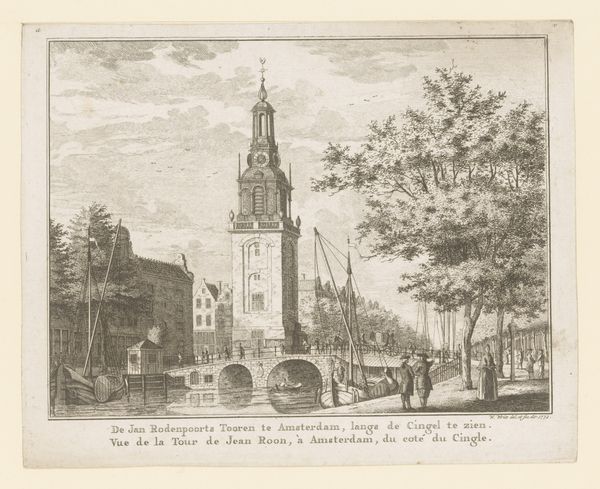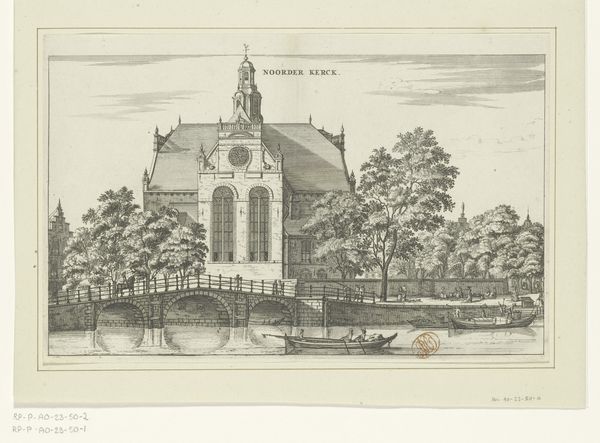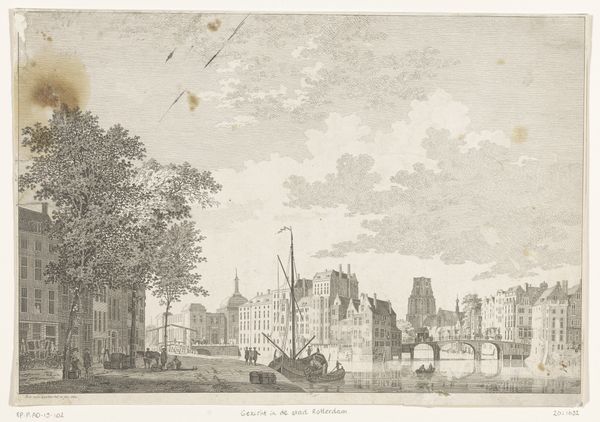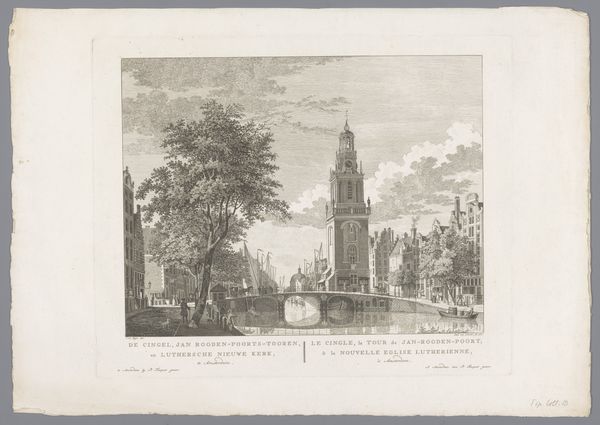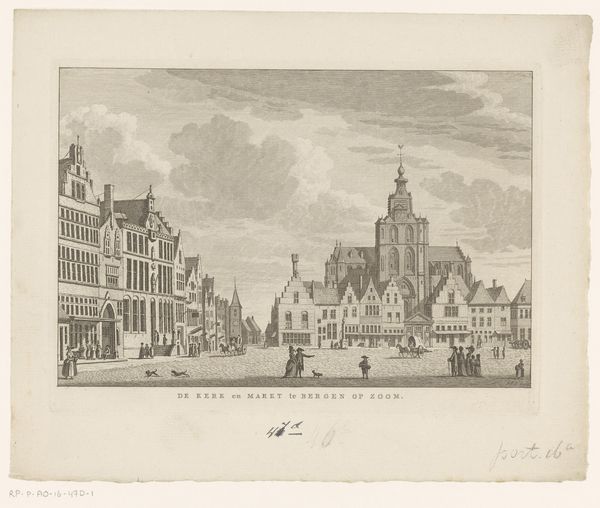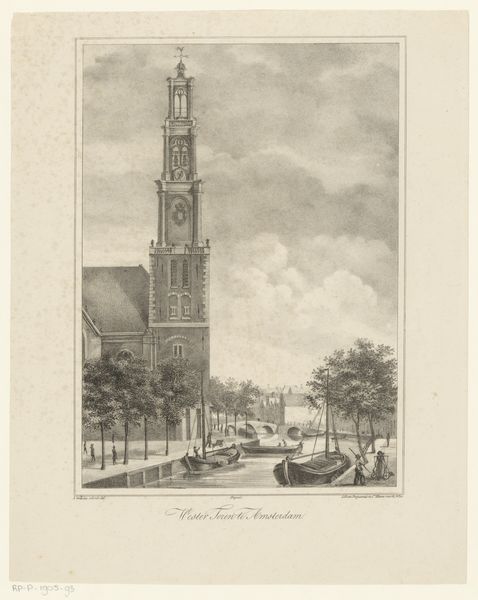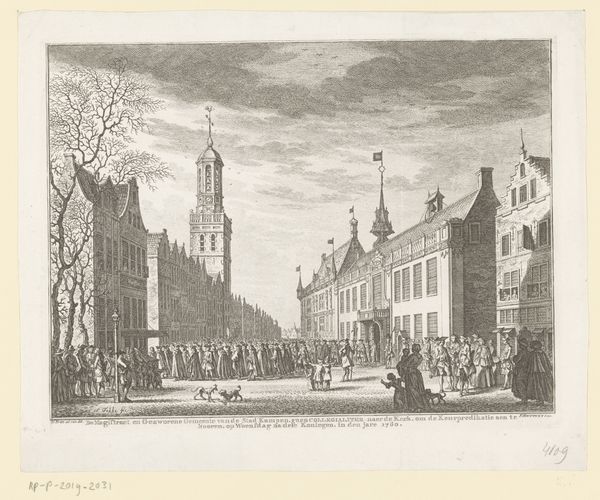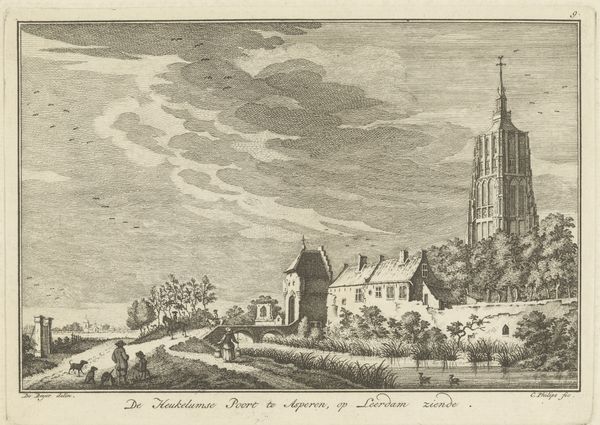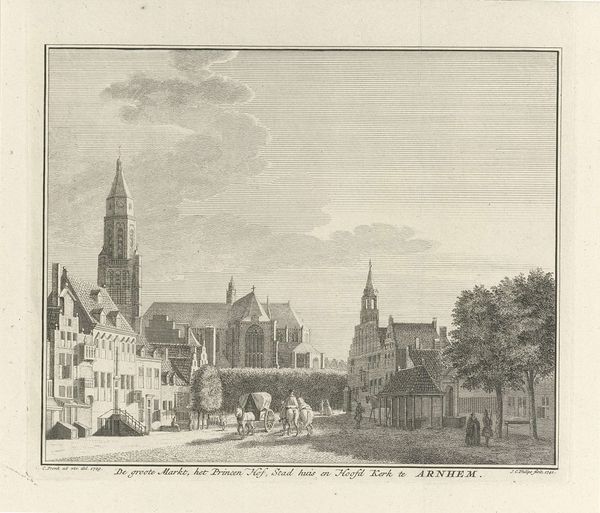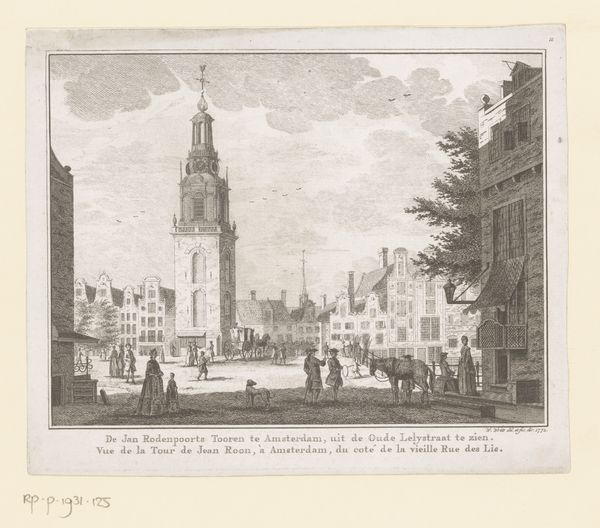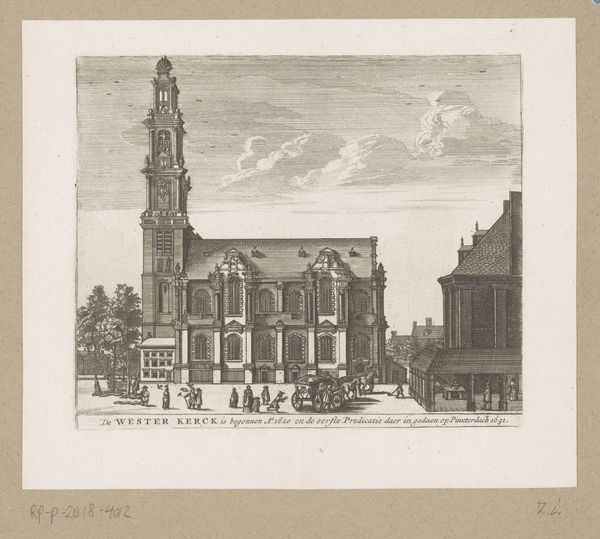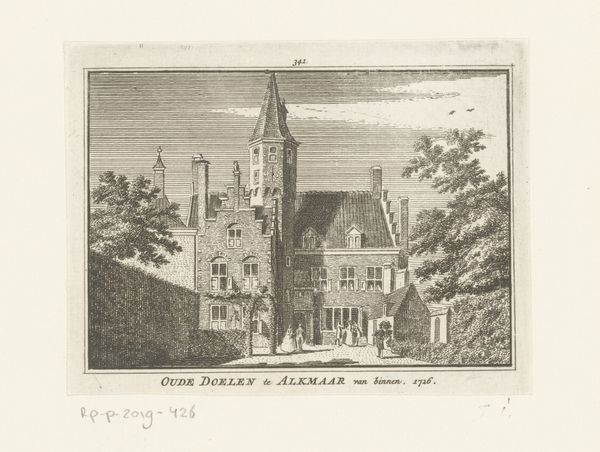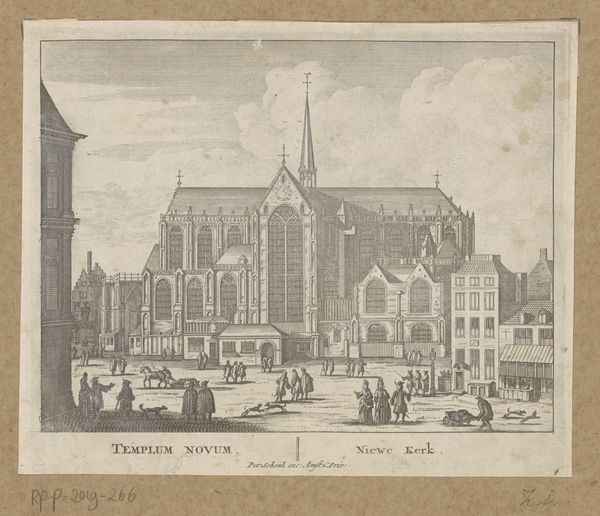
print, engraving
#
dutch-golden-age
# print
#
landscape
#
perspective
#
line
#
cityscape
#
engraving
Dimensions: height 167 mm, width 200 mm
Copyright: Rijks Museum: Open Domain
Curator: Look at the delicate lines defining this print; it’s Abraham Rademaker’s "Gezicht op de Saaihal te Leiden," created after 1732. An engraving showcasing the Leiden cloth hall, now housed here at the Rijksmuseum. Editor: It strikes me as serene, almost idyllic. The precision of the lines creates a detailed, yet soft impression. The artist’s labor is evident in this intricate work. Curator: Rademaker's work provides insight into the institutional architecture and urban planning of the Dutch Golden Age, doesn't it? Consider the Saaihal’s function as a central marketplace for cloth, pivotal in Leiden’s economic history, and this piece captures it in its prime. Editor: Exactly! The focus on the textile hall points to the dominance of cloth production in Leiden's economy, while Rademaker's engraving showcases how the value and status of the marketplace building got materialized. The way it depicts labor— implied rather than explicitly shown —reveals something about 18th-century modes of production. Curator: The viewpoint highlights the social context as well, portraying a busy waterway alongside the Saaihal with passengers in the boats, thus creating a sense of public space. I'd love to dig into Rademaker's other works and find out if that approach to social imagery carries through to them. Editor: Rademaker isn’t just representing a building; he’s constructing a visual document deeply embedded in the social and economic realities of his time. Think of the tools, the metal plates, the workshops producing these images: it all highlights how visual culture was actively being shaped in this era. Curator: The very act of commissioning and collecting these kinds of prints underscores the elite’s investment in portraying their cities and commercial prowess, cementing a particular vision of Leiden within Dutch cultural identity. Editor: True. I come away appreciating how this work documents not only the place itself but the whole network of production and meaning surrounding its making and reception. Curator: And how it encourages a reflection on how institutional spaces, like the Saaihal and indeed, the Rijksmuseum, mediate our understanding of the past and present. Editor: Precisely. It’s a compelling insight into both the literal and the material landscape of Leiden then and now.
Comments
No comments
Be the first to comment and join the conversation on the ultimate creative platform.
